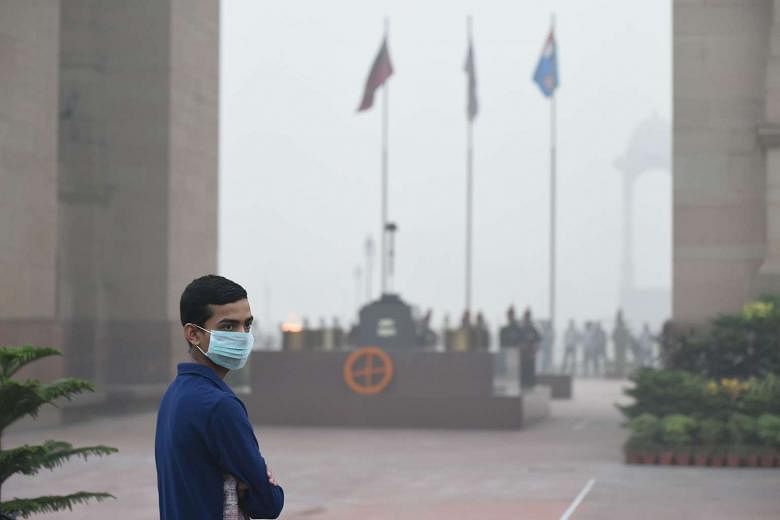People in Varanasi, Allahabad and Gwalior did not breathe "good air" on even a single day in 2015, according to a report released on Monday (Dec 12) by three environmental groups.
In contrast, Delhi had 24 "good air" days in 2015, according to the same report.
"Good" air indicates an Air Quality Index score below 50. Anything above 100 - "moderate" - is considered to be dangerous for children, the elderly and people with respiratory conditions.
According to British newspaper The Guardian, the report's lead author, Aishwarya Madineni, said the levels recorded in Varanasi appeared to regularly breach 150, when the air is classified as "unhealthy" and begins to affect the general population.
The researchers found that levels of airborne pollution in Varanasi finer than 2.5 micro-metres - the most harmful variety because they can reach deep into the lungs and breach the blood-brain barrier - were routinely double the safe limit in October and November 2015.
Levels of coarser particles finer than 10 micro-metres were triple the safe limit in 2016 and had increased by more than one-third since 2010, the research showed.
The Guardian reported that the levels of harmful airborne particles across the north Indian plains are routinely higher than in the capital, Delhi.
It added that Varanasi has only three air quality monitoring stations with just one online monitoring station that monitors both PM 10 and PM 2.5. In comparison, Delhi has 13 continuous air quality monitoring stations.
The report released by Centre for Environment and Energy Development (CEED), IndiaSpend and Care4Air also quoted doctors and patients from Varanasi who testified on the health problems associated with the air pollution.
Dr RN Vajpayee, a pulmonologist and a chest physician, said cases of asthma and complaints of breathlessness have increased by 20 to 25 per cent.
Child specialists cited in the report said there had been an eight-fold rise in respiratory illnesses in Varanasi and the degrading air quality was seen as the main cause.

